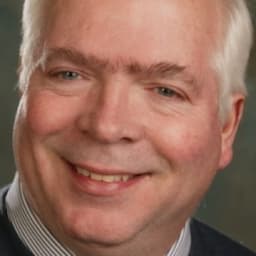Moody’s downgrades Senegal to Caa1 amid rising debt concerns
- Inverted yield hikes in U.S. and Europe are forecasting recession
- Investor focus in Fed’s meeting is on inflation and rate forecasts
- Policymakers at the ECB and the Bank of England have mixed views
Some investors and economists see a ray of hope in the current market rallies, but a persistent yield curve inversion is stubbornly warning that a recession is on the way.
Recessions come in many forms, and the best many hope for is a soft landing with just a mild downturn and a minor increase in unemployment. A yield curve inversion, while usually reliable, is not very specific about what kind of recession is on the horizon.
The yield on the 10-year Treasury note had fallen below 3.5% from above 4.2% about a month ago but rose ahead of the Fed meeting to above 3.6%. The 2-year note, however, has not kept pace with the yield drop in the longer-dated bond, so the spread between the two reached negative 0.77 percentage points on Monday after hitting negative 0.84 last week, compared with negative 0.5 a month previously. In July, the spread was still positive.
The situation in Europe is similar, as the 10-year German government bond yield, which serves as a benchmark for the eurozone, was nearly a quarter-point under 2%, while the 2-year yield ranged mostly over 2%.
The yield curve inversion reflects the belief that central banks will react to a recession by lowering interest rates so that bond yields further out can follow the decline in rates. The rise in the shorter-dated bonds mirrors expectations that central banks will be hiking rates in the near term.
Policymakers have not been shy about their intentions. Three major central banks holding policy meetings this week – the Federal Reserve, the European Central Bank, and the Bank of England – have all indicated a hike of at least 50 basis points to close out the year.
The question for investors now is what these central banks will do next year. Investors will be looking for clues in the post-meeting press conferences. In the U.S., they will pore over the economic projections to see the forecasts for inflation, growth, and interest rates from the members of the Federal Open Market Committee.
In fact, policymakers don’t really know what they will do next year or where prices and interest rates are going.
The belief in the U.S. is that inflation has peaked. The producer price index for November released last week showed a 7.4% increase on the year, a decline from 8.1% in October, but the seasonally adjusted gain in the month was 0.3% as food price increases more than offset declines in energy prices and the consensus forecast was for a 0.2% gain.
The stubborn resistance of inflation to the Fed’s repeated rate hikes is likely to discourage optimistic talk from Chairman Jerome Powell, who has insisted that the U.S. central bank will continue with hikes until inflation is contained.
A slight decline in European inflation to 10% in November from 10.6% the previous month raised hopes that inflation there has peaked. ECB policymakers have expressed divergent views. A hike of 75 bps at the ECB governing council meeting this week is still possible, but most investors now expect a more moderate increase of 50 bps.
The negative growth forecast for the fourth quarter of this year and the first quarter of next year would put Europe in a technical recession, but the real test will be how prices develop.
The Bank of England faces an even bigger challenge with inflation coming in at 11.1% in October, but the preponderance of opinion is for a 50-bp hike this week, to 3.5%, after last month’s 75-bp hike.
Silvana Tenreyro, the super-dove on the Monetary Policy Council, wants to keep rates on hold after she voted for only a 25-bp hike last time. An HSBC economist has predicted a possible four-way split on the nine-member MPC, with rate votes all over the map.
